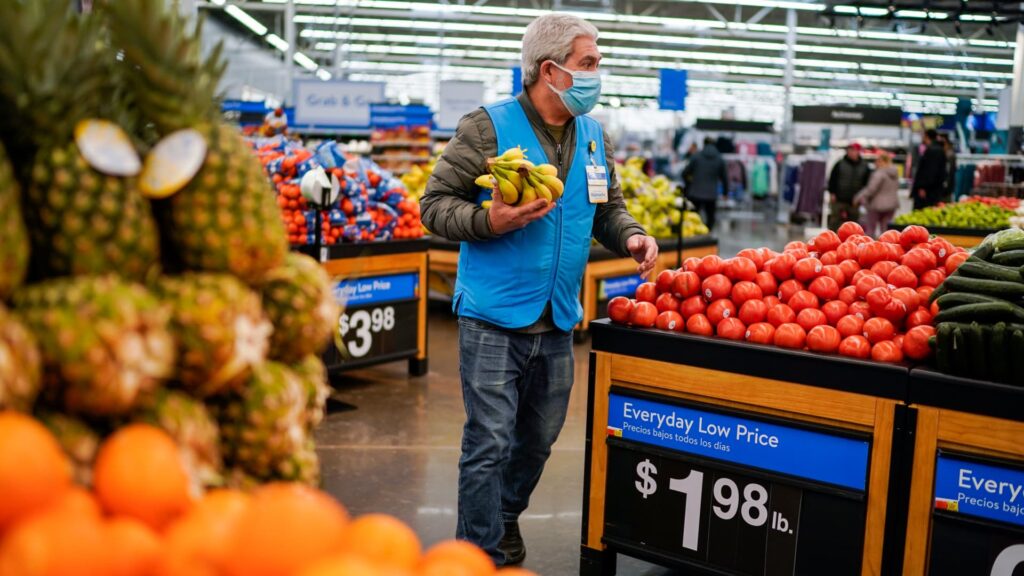A worker carries bananas inside the Walmart SuperCenter in North Bergen, New Jersey.
Eduardo Munoz Alvarez | AP
For some shoppers who already struggle to cover grocery bills, the budget is getting tighter.
This month, pandemic-related emergency funding from the Supplemental Nutrition Assistance Program, formerly known as food stamps, is ending in most states, leaving many low-income families with less to spend on food.
More than 41 million Americans receive funding for food through the federal program. For those households, it will amount to at least $95 less per month to spend on groceries. Yet for many families, the drop will be even steeper since the government assistance scales up to adjust for household size and income.
For grocers like Kroger, big-box players like Walmart and discounters like Dollar General, the drop in SNAP dollars adds to an already long list of worries about the year ahead. It’s likely to pressure a weakening part of retailers’ business: sales of discretionary merchandise, which are crucial categories for retailers, as they tend to drive higher profits.
Major companies, including Best Buy, Macy’s and Target, have shared cautious outlooks for the year, saying shoppers across incomes have become more careful about spending on items such as clothing or consumer electronics as they pay more for necessities such as housing and food.
Food, in particular, has emerged as one of the hardest-hit inflation categories, up 10.2% year-over-year as of February, according to the U.S. Bureau of Labor Statistics.
“You still have to feed the same number of mouths, but you have to make choices,” said Karen Short, a retail analyst for Credit Suisse.
“So what you’re doing is you’re definitely having to cut back on discretionary,” she said.
The stretch has made it impossible for some to afford even basic items. It’s still too early to see the full impact of the reduced SNAP benefits, said North Texas Food Bank CEO Trisha Cunningham, but food pantries in the Dallas-Fort…
Read the full article here





